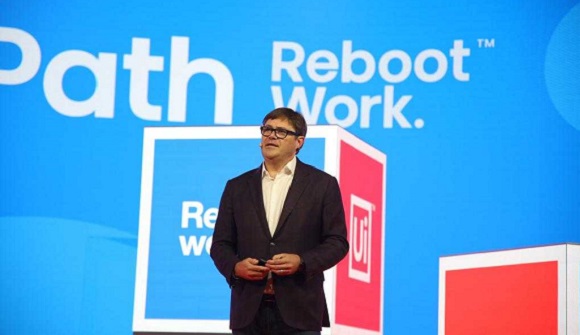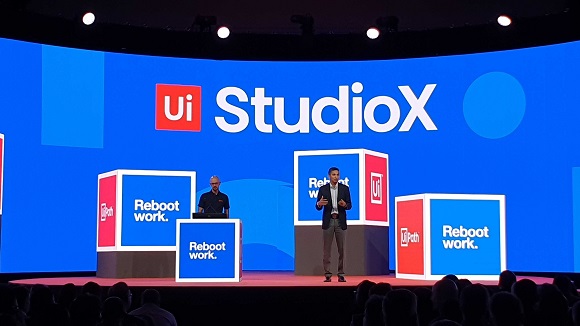UiPath Forward III: keynote notes, quotes & anecdotes
Software automation specialist organisation UiPath staged it’s annual FORWARD user conference this week in Las Vegas and the Computer Weekly Developer Network team was there to soak up the tech know-how.
The company’s core technology proposition revolves around its development of Robotic Process Automation (RPA) technologies — IT advancements designed to shoulder human workloads by automating workflow tasks inside live business operations.
UiPath doesn’t stop to explain how its name came about… but we can safely assume that it is so named because it wants to offer a ‘path’ for users to be able to shift-off increasing amounts of work that would have featured inside their User Interfaces (UI) to the RPA bots that it develops and manages… right?
Official notes detail the use of Ui = User Interface and Path = the path of a workflow on the screen… it’s all about more succinctly capturing the opportunity from ‘computer vision’ technology.
Rules, to experience
UiPath’s chief marketing officer Bobby Patrick used his time on stage to acknowledge that we’re on a journey from rules-based technologies to experienced-based technologies that adapt to the reality of company workflows in real time… and now ‘grafting’ RPAs onto a moving target like this is a pretty complex and big ask.
“The automation era is in full swing — it’s a mindset shift to be able to examine your workflows and now work to bring [software] robots into the workplace. We now sit at a point where not just developers, but also citizen developers and subject matter experts are going to be able to not only use, but also develop automation… and this is at the point where automation itself becomes an application in its own right,” said Patrick.
Cheif product officer Param Kahlon followed Patrick onto the stage to dig into more of the UiPath product development story.
Kahlon bemoaned the fact that cloud has not (generally) made things in technology any easier… and he thinks that by automating business processes at the UI level, we can automate [via RPA] in many high-value ways.
Several customers took part in this keynote… and the general sentiment from all of those who spoke was their focus not just on data, but on the ‘shape of transactions’ inside their businesses.
Looking at what RPA needs to do next, Kahlon explained that UiPath customers are asking for a democratisation of RPA so that users at every tier in the company can start to build the bots they need… we also need to move towards directing RPA at more complex processes that drive increasingly interconnected elements of work.
The company wants to champion the development of what it calls a ‘robot for every person’, which is a way of saying that every employee in the workplace has a degree of their work managed by automation.
The message from UiPath is that we’re now working hard to put real context awareness into RPA so that it goes a good way beyond basic computer vision — the more straightforward technologies that deal with how computers gain high-level understanding from digital images or videos.
People are still needed to validate exceptions in the development of RPAs… which is of course why we talk about the need to incorporate Human In The Loop (HITL) into enterprise use of software robotics.
UiPath accommodates for this reality in its total suite of products. When a process execution requires a human input, the software directs the human user to look more closely at the task to see whether some software of anomaly or problem exists.
In terms of next stage, RPA is now previewing the ability to allow human-robot interaction in this way even on a mobile interface. As RPAs are directed at more complex business problems, we can expect that the operationalisation of RPAs into business workflows will need this careful level of touch and feel as we move to more fully automated business on a day-to-day basis.
Platform picks
The UiPath Platform features UiPath Studio (a software tool for designing RPA bots that will take on manual processes), UiPath Orchestrator (a management tool that takes on the role of a ‘control tower’ to look after RPA bots and also lay down security layers) and UiPath Robots (for both attended and unattended bots).
UiPath used Las Vegas event itself to detail new product launches including UiPath Explorer, a new offering designed to accelerate ‘process’ understanding and automation pipelines. Other new additions to the platform include UiPath StudioX for Citizen Developers.
As part of this event’s keynote session the company detailed the mechanics of how its UiPath StudioX works. The tool can directed to focus on information stored in an Excel file and then monitor how a user might bring in additional information to the spreadsheet to perform updates (such as creating new fields and so on).
As we now work more closely with bot technologies, we are starting to see an increasing number of companies formally define the role of RPA Engineer, Head of RPA Development or RPA Lead and so on.
Robots just got one bit closer to real reality.

UiPath CMO Bobby Patrick

UiPath live product demos formed part of the keynote.



